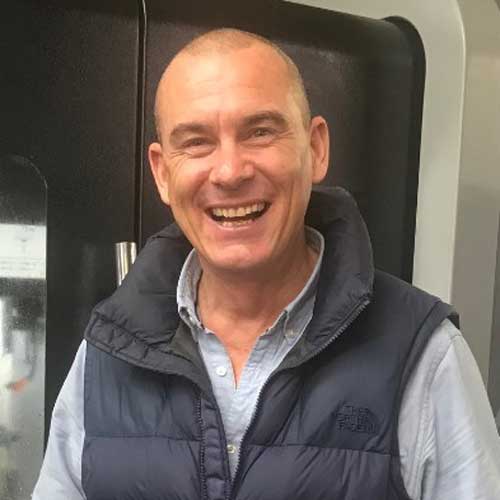If your next programme does not justify a six-figure tool or a container of parts, low volume manufacturing UK is likely the smarter path. In this chapter-style guide, we unpack where low volumes win on time, risk and cash, how to choose a process, and how Attwood PD delivers from rapid prototypes through to production in plastics and metals.
Who this is for: design engineers, product owners and operations leaders who need production-quality parts without committing to mass production.
What do we mean by low volume?
Low volume typically covers pilot runs, bespoke batches and sustained build rates where total demand sits between dozens and a few thousands. Think: V1 consumer hardware launches, motorsport spares, medical device trials, aerospace MRO, industrial instruments and speciality enclosures. The sweet spot is where you need production-grade materials and repeatability, but value speed, flexibility and working capital over the absolute rock-bottom unit cost.
Why choose low volume over mass production?
- Faster market entry: ship pilots in weeks, not quarters.
- Lower cash exposure: modest tooling or no tooling at all; scale when the market proves itself.
- Design agility: iterate the product without writing off expensive hard tooling.
- Supply resilience: UK-based supply shortens lead times and reduces logistics risk.
In the UK, buyers often compare digital platforms such as Protolabs, Xometry and Geomiq with specialist shops and integrated product-development partners; expectations on speed, DFM support and case-study proof are therefore high.
Process choices that fit low volumes
Selecting the right process is the difference between a neat prototype and a profitable product. Use the matrix below as a starting point, then pressure-test with your supplier.
Process selection matrix
| Requirement | 3D printing (SLS/SLA/FDM/Metal) | CNC machining | Vacuum casting (PU) | Sheet metal fabrication | Injection moulding (bridge/soft tooling) |
|---|---|---|---|---|---|
| Typical batch | 1–500 | 1–2,000 | 10–200 | 10–2,000 | 100–20,000 |
| Lead time | 1–5 days | 3–15 days | 5–10 days | 5–15 days | 2–5 weeks for tool; parts 1–2 weeks |
| Part complexity | High (organic, lattices) | High (prismatic/5-axis) | Moderate (elastomeric overmould feel) | Moderate (enclosures, brackets) | High if designed for moulding |
| Material set | Nylons, photopolymers, alumide, metals | Aluminium, steels, plastics | PU resins (ABS-like, rubber-like) | Steels, aluminium | Commodity & engineering thermoplastics |
| Finish options | Bead-blast, dye, coat | Bead-blast, anodise, plate | Tint, texture | Powder coat, plate | Texture, colour, overmould, insert |
| Unit cost curve | Flat at low qty | Moderate decline | Flat to moderate | Moderate decline | Steep decline with volume |
Rule of thumb
- Use SLS/SLA for complex geometries, fast pilots and jigs.
- Use CNC when tolerances, cosmetics (machined metals) or isotropic properties matter.
- Use vacuum casting for short-run, mould-like housings with snap-fits and living hinges.
- Use sheet metal for chassis, brackets and EMI-shielded enclosures.
- Use bridge/soft-tool injection moulding once design is stable and demand is proven.
Cost and risk: how low volumes protect your roadmap
The cash model
- Minimal NRE: little or no permanent tooling; soft tools can be amortised in the first few hundred units.
- Shorter C2C: faster cash-to-cash cycle improves working capital.
- Agile learning: incorporate field feedback before locking in mass-production constraints.
Find your break-even
- Estimate mass-production hard tooling and the unit price at full rate.
- Compare with a low-volume route (e.g., CNC or soft-tool moulding) across the first 1,000–5,000 units.
- The cross-over point is where the cumulative cost lines intersect; build below that with low-volume methods, then switch.
UK case vignettes
- Motorsport: CNC aluminium throttle bodies and SLS nylon ducts in 2 weeks keep a race programme supplied between design changes.
- Medical: vacuum-cast housings in ABS-like PU for formative trials while ISO-compliant moulds are prepared.
- Aerospace MRO: sheet-metal brackets with full traceability in batches of 50–200; reorder on kanban.
- Consumer electronics: bridge-tool moulding for 3,000 pre-launch units to validate retail packaging and field reliability.
- Industrial IoT: SLS nylon with heat-set inserts for rugged sensor enclosures; rapid revisions as boards change.
What to look for in a UK partner
- Process breadth across plastics and metals (3D print, CNC, sheet metal, casting, moulding) to match each phase.
- DFM and material guidance from concept to PPAP/FAI where required.
- Quality systems and documentation: traceability, inspection reports, and clear acceptance criteria.
- Transparent lead times and pricing, with break-even advice and options.
- Evidence: case studies, guides and FAQs that demonstrate experience. UK buyers see rich resource libraries from market leaders, so content depth is a signal of maturity.
Common search terms you might use alongside the primary keyword include small batch manufacturing UK, low volume production UK and on-demand manufacturing UK; these are natural variants pointing to the same buyer intent.
How Attwood PD makes low volume work
Attwood PD is your one-stop prototyping and production partner for plastics and metals, from rapid prototypes to low-through-high volume production. Our model is built for UK teams that want to move fast without compromising quality.
- Consultative DFM: we stress-test designs for the intended route (print, machine, mould, fabricate) and propose alternatives where cost or yield can improve.
- Process-agnostic selection: we recommend the process that fits your volumes and risk, not the one we happen to own.
- Bridge to mass production: once demand hardens, we manage the transition to higher volumes, tooling and supply planning.
- Quality and documentation: inspection plans, material certs and, where applicable, FAI/PPAP to your sector’s expectations.
- Predictable lead times: UK-centric supply with pragmatic scheduling and communication.
Ready to talk through your next batch? Send a CAD and a target quantity; we will return options, break-evens and lead times in language your finance team will appreciate.
Practical checklist
- Define your target build window and acceptance criteria.
- Pick a process using the selection matrix; request two quotes to see the trade-offs.
- Model your 0–5,000 unit cost curve and identify the cross-over to mass production.
- Lock tolerances that matter; relax or datum the rest.
- Plan finishes, testing and packaging as part of the unit cost early.
FAQ: quick answers for busy teams
Is 3D printing production-grade? Yes for many polymers and some metals; pick materials with known mechanicals and validate orientation and surface prep.
When does injection moulding make sense? As soon as the design is stable and demand suggests 1,000+ units; soft tools help you avoid over-committing.
How fast can I get parts? 1–5 days for many prints, sub-2 weeks for CNC on straightforward parts, and 2–5 weeks for a bridge tool with parts shortly after.
Can I mix processes? Often the best answer. For example, CNC the heatsink, mould the housing, 3D print the internal duct, then assemble and test in one UK workflow.


